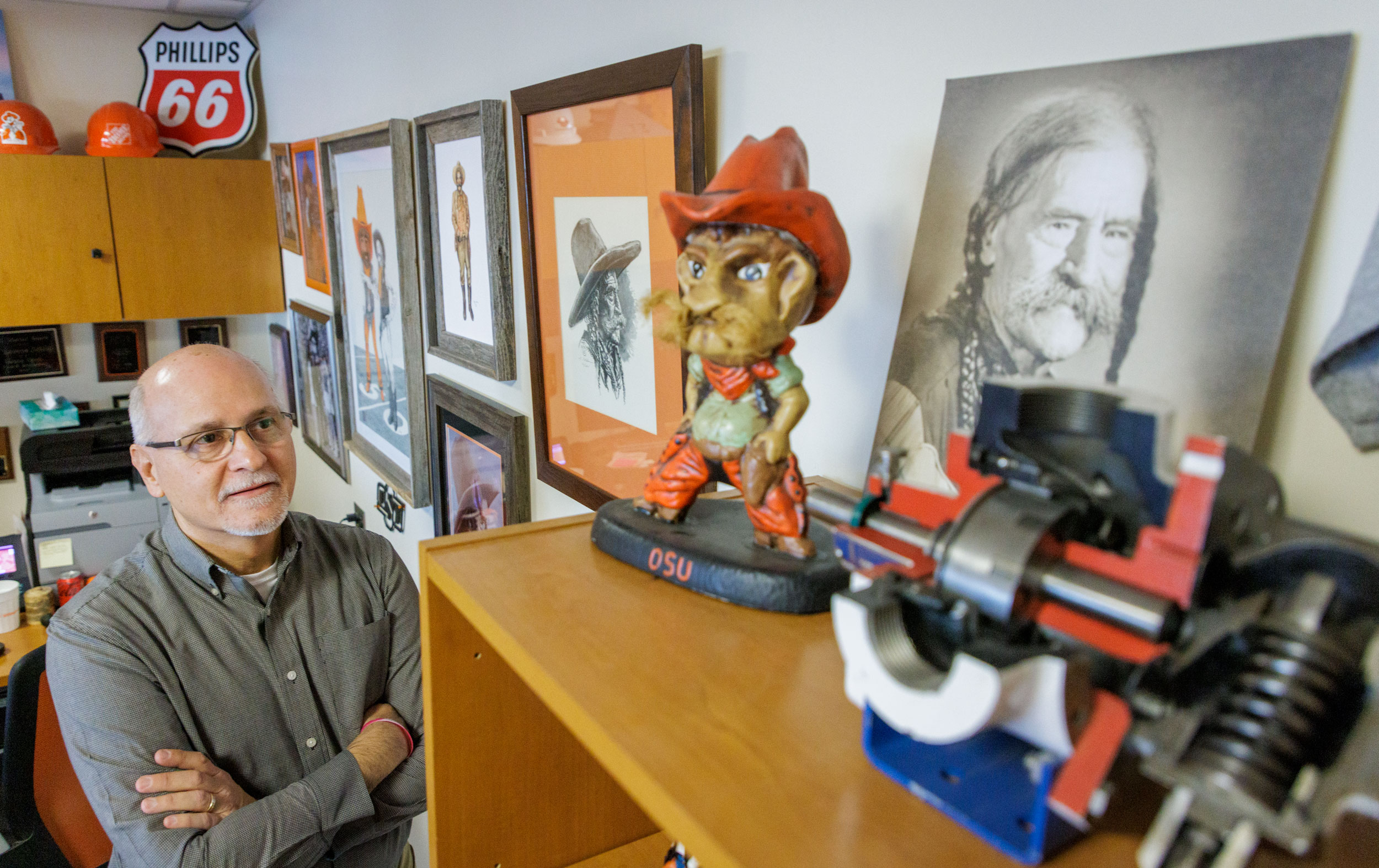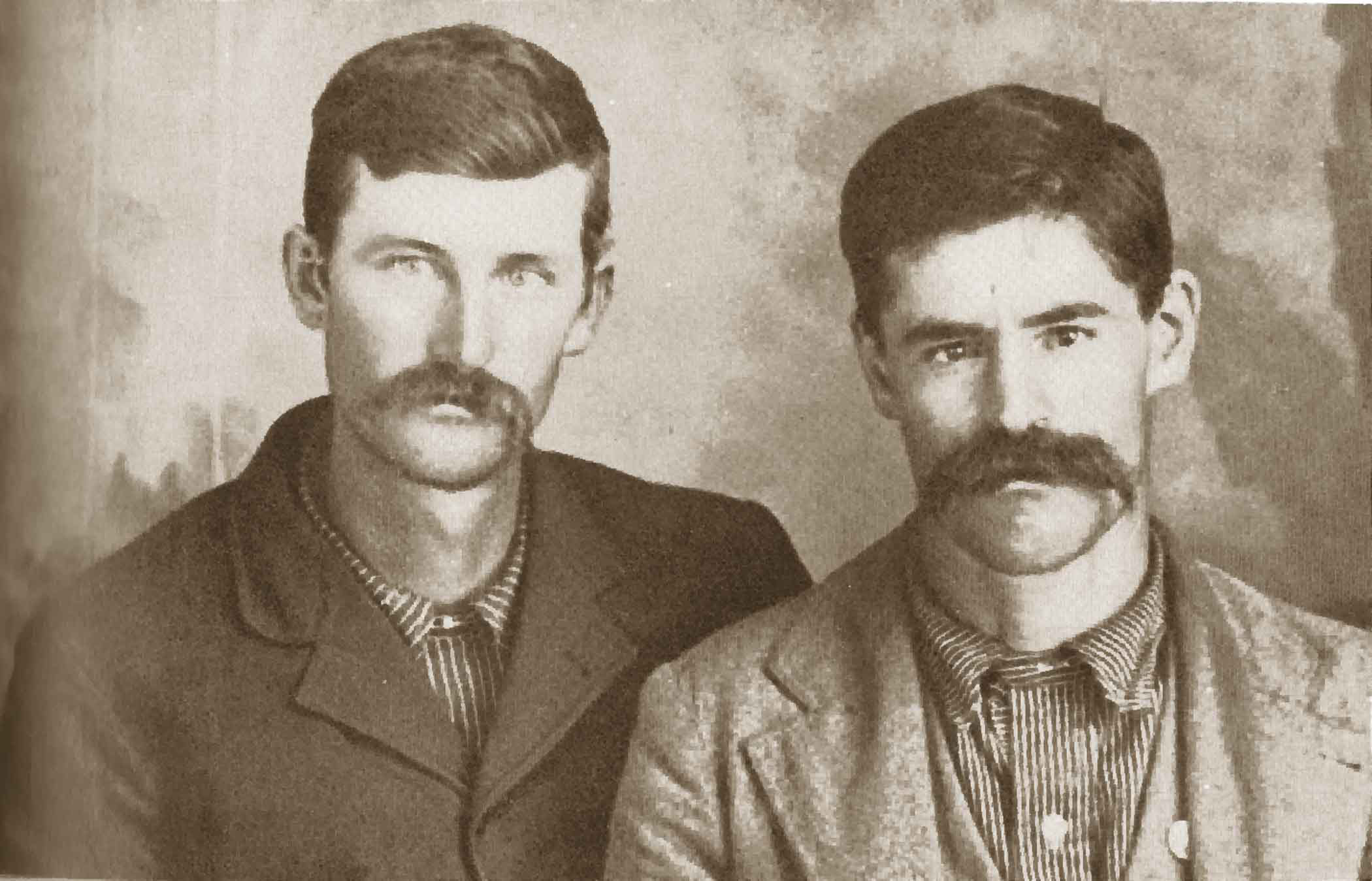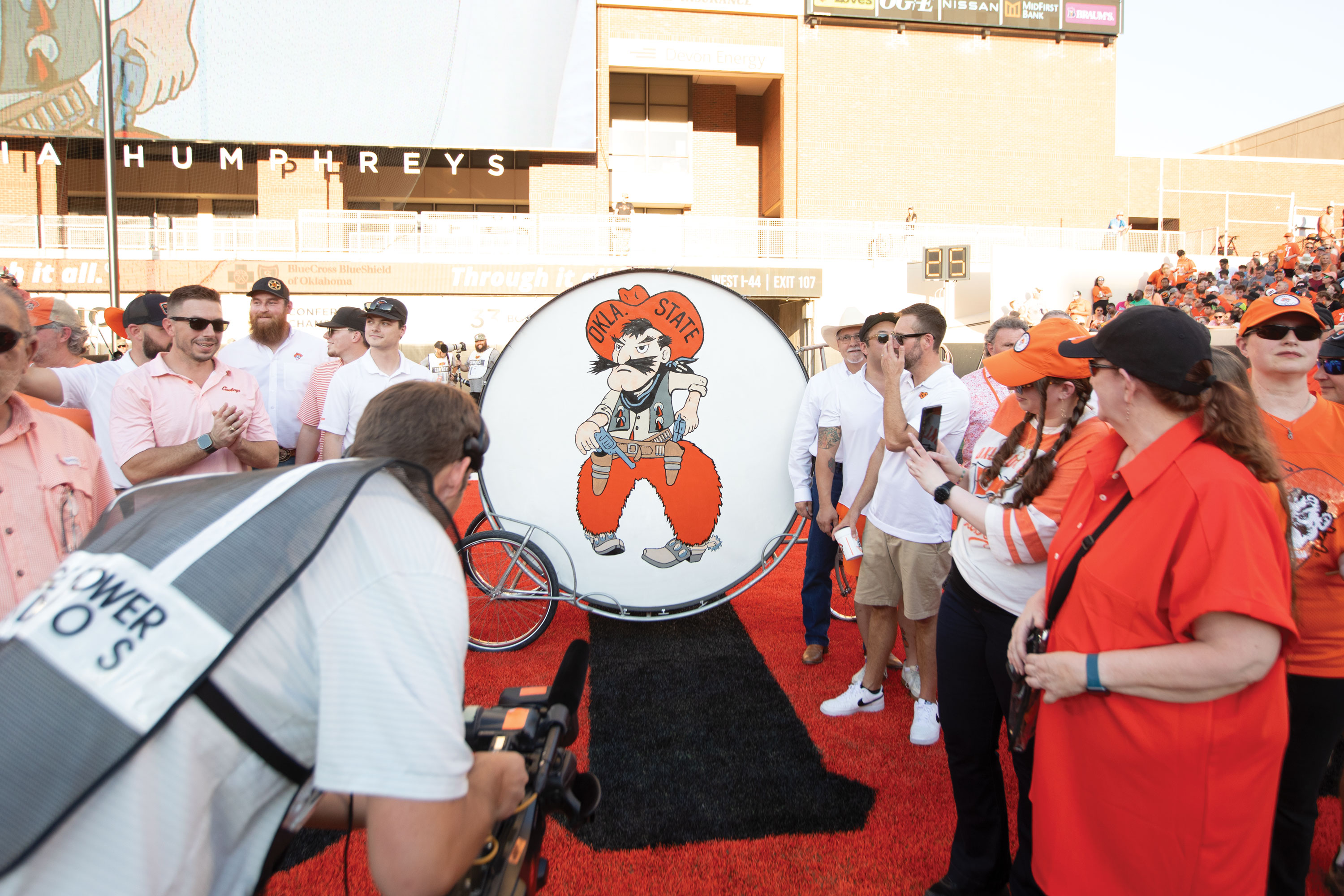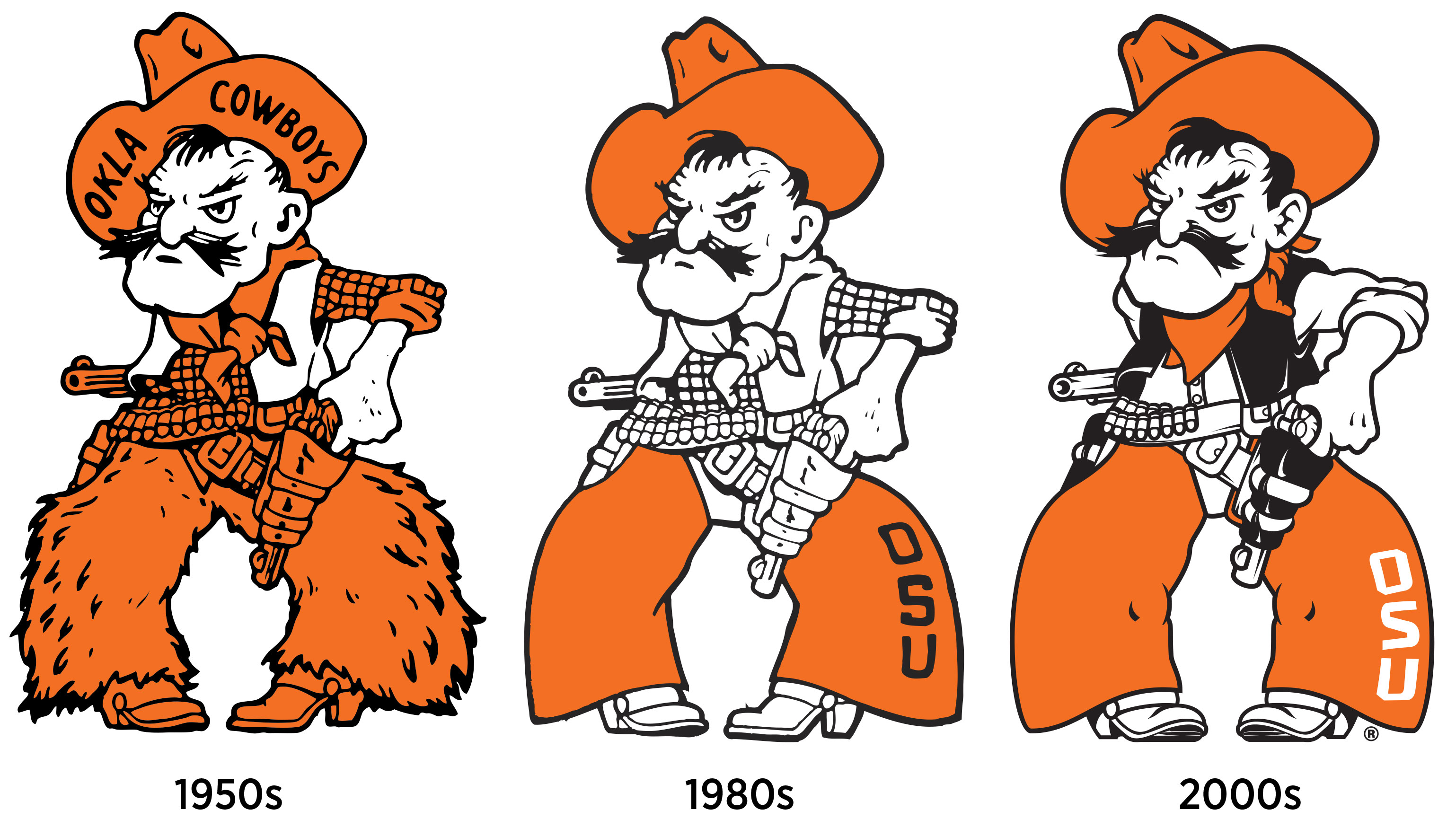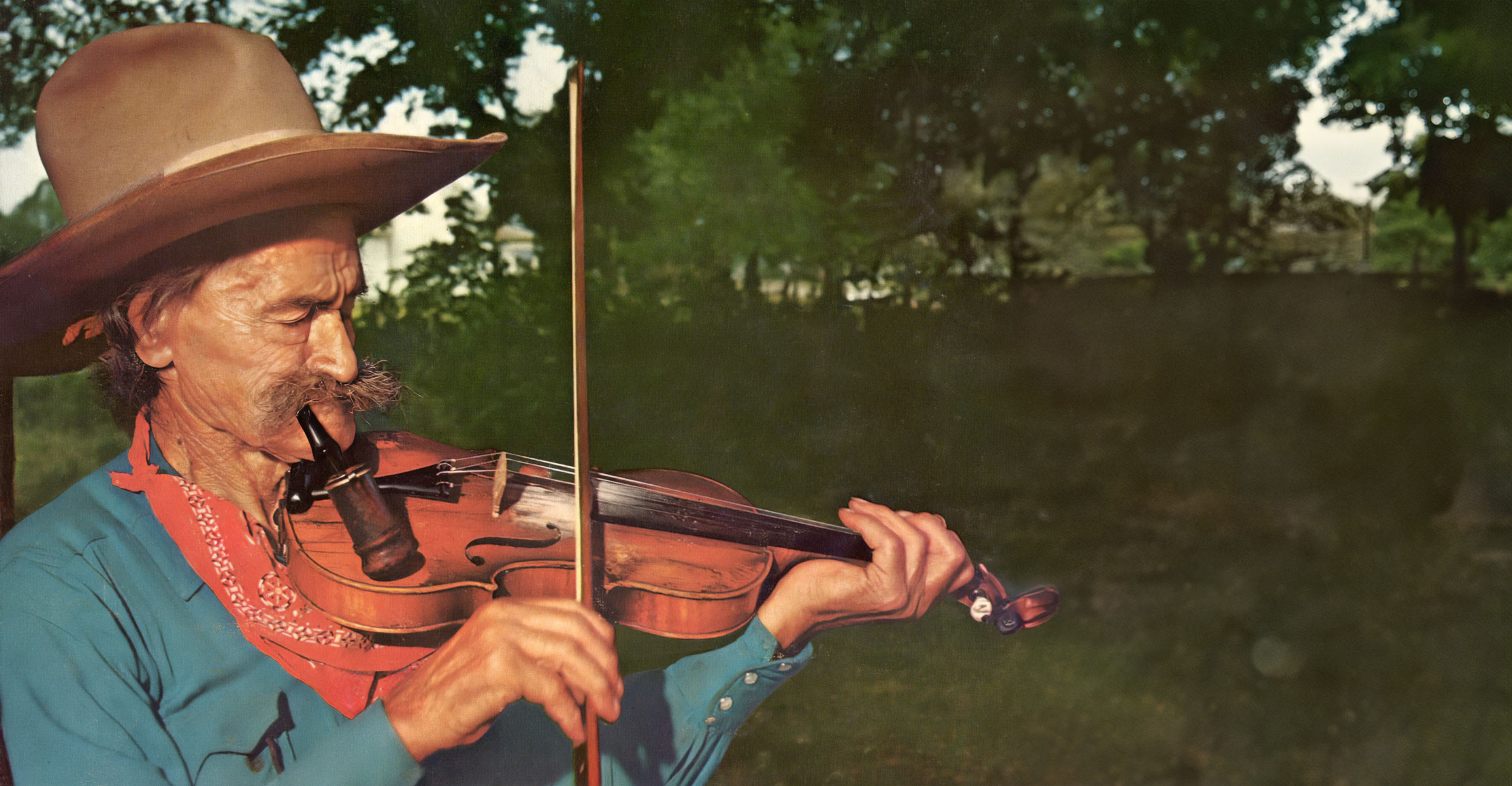
Commemorating our Cowboy: University pays tribute to the inspiration behind its mascot
Thursday, December 21, 2023
Media Contact: Mack Burke | Associate Director of Media Relations | 405-744-5540 | editor@okstate.edu
If he wasn’t spending time at his blacksmith shop telling stories and handing lollipops to kids, riding his horse from town to town, hosting visitors from faraway lands and nations, picking up hot coals with his frostbitten feet or teaching bison to play with tennis balls, Frank Eaton could usually be found playing the fiddle.
He had learned to play it later in life, after his second wife, Anna, convinced him to join her when she played piano. He would play for his grandchildren and area kids at their homestead on Highway 33 near Perkins, Oklahoma, with his favorite tune being “Pop Goes the Weasel.”
At the end of every verse, the old cowboy would tap a kid on the head with the fiddle bow. Eaton was ornery and liked to have fun, something that 100 years later persists in the Oklahoma State University mascot modeled after the famed Western scout: Pistol Pete.
In 1923, a few years following the end of World War I, Eaton traveled 11 miles north of Perkins to Stillwater to ride his horse in the Armistice Day Parade — now known as Veterans Day.
Stillwater had grown exponentially since the founding of Oklahoma Agricultural and Mechanical College in 1890. The college was young at the time and initially modeled itself after Princeton University, even up to the colors — orange and black — and mascot — the Tigers. But once OAMC students saw Eaton in that parade, they felt his Old West feel embodied their characteristics better than an Ivy League university in New Jersey.
“I think people relate to Grandad because he was such a real person,” said Jewel Himes, Eaton’s granddaughter. “He was an honest-to-goodness cowboy back in the days when you rode horses everywhere. He was still riding horses in his 90s. That was just who he was. He was a law man, the deputy U.S. Marshal. What he represents is something that’s very identifiable.”
Eaton was born in Connecticut on the eve of the Civil War. His family moved more than 1,300 miles — about half the width of the U.S. — west to Kansas, where his father was shot. Legend has it that Eaton later brought the men responsible to justice.
Growing up on the plains, Eaton learned the ways of the Old West. One story placed him at the Army base in Fort Gibson, Oklahoma, where at 15 he sharpened his marksmanship skills and out shot some of the Army’s best sharpshooters, earning him the nickname “Pistol Pete” from Col. John Joseph Coppinger.
The legend had been firmly established, and Eaton continued to evolve into a significant figure in Oklahoma’s formative history.
Paying Tribute
Eaton lived to see the campus grow throughout his time, and eventually change its name, from OAMC to Oklahoma State University in 1957. At 97, the bowlegged cowboy still rode his horse around stadiums. However, a little less than a year later, Eaton and the frontier image OAMC once had passed away on April 8, 1958.
The following November, student Charles Lester appeared at one of the Cowboys’ football games wearing a papier-mâché head resembling Eaton. A tradition was born. From that game on, the students embraced the Pete mascot and the university quickly adopted it as the official mascot.
The 95 men who have portrayed Pete since Lester have formed an unofficial fraternity that not only represents the university but also pays tribute to the man who inspired them.
Each person who tries out to be Pete must know about Eaton, through studying his history and reading his books. The Eaton family still maintains a strong relationship with the university and both Pete and Pete alumni attend the Eaton family reunion each year at the historical homestead, which was moved to midtown Perkins.
Steven Vekony grew up in a family of University of Oklahoma fans and never thought he would be Pete. In fact, he tried out twice starting in 2015 and wasn’t selected, but the third time was the charm and he was selected in 2017, becoming the 88th man to portray Eaton — an experience that forever changed his life.
“Being Pete affected everything in my life,” Vekony said. “Iron sharpens iron. It affected my core group of men that I associated myself with, it affected the way I looked at this university with more pride. Being able to encompass something that everybody associates themselves with and finds joy in, was a super humbling experience.”
Vekony’s first tryout introduced him to Mike Martin, the 20th man to be Pete. Martin served as the mascot from 1972-73 but knows from personal experience that being Pete is a lifetime commitment.
“My grandkids don’t know my real name,” Martin said. “They call me Pete. For the rest of our lives, we are Pete. So, we better behave.”
It’s an honor, one Martin moved back to Stillwater to be more involved in even after he had hung up his spurs.
As ambassadors for the university, Petes and Pete alumni take the responsibility of being positive representatives of the university and the Eaton family seriously.
“I think having a personal relationship with the Eaton family, and the uniqueness of our mascot being based off of a real person who settled down in Oklahoma, who embodied what the state’s about, who had a work ethic, being able to have that relationship with the Eaton family, is huge,” Vekony said.
Lance Millis served as the 43rd Pete from 1987-88 at a special time in OSU athletics. Future NFL stars Thurman Thomas and Barry Sanders played at Lewis Field; future Golden Glove winner Robin Ventura was setting records at Allie P. Reynolds Stadium; and John Starks and Liz Brown dominated the hardwood at Gallagher-Iba Arena, with Cowboy legend John Smith becoming possibly the best wrestler the dynasty had ever seen.
In other words, it was a phenomenal time to be the university’s mascot and watch all these star athletes. Reflecting on his time as Pete, Millis noted his change in perspective on the role now.
“I learned that being Pistol Pete, as the person who’s a college student, and experiencing being Pete is one thing, and then thinking back with an adult’s perspective on representing a real-life human being who has descendants who have opinions about what you do is another,” Millis said. “This man when you’re portraying him, he’s just an old cowboy, and colorful, and you’re just trying to emulate it.”
Preserving a Legacy
Eaton was a genuine cowboy in the Wild West, and his death occurred just eight years before Millis was born. Meaning that the cowboy era and the way of life in this region was not far removed from today. When Millis began working as a university representative in 1989, he also began researching Eaton in depth.
“From 1989 to 1996, I had been researching Frank Eaton’s life with the intent of getting him inducted into the National Cowboy and Western Heritage Museum,” Millis said. “I submitted his name and numerous supporting documents, and the Hall of Fame chose to award him the director’s award.”
Millis was able to establish a relationship with Eaton’s youngest daughter, Elizabeth Wise, who audited a class at OSU and on March 15, 1997, she accepted the Special Director’s Award on behalf of Eaton during the National Cowboy and Western Heritage Museum awards ceremony with then OSU President James Halligan.
Determined to see his grandfather inducted into the National Cowboy Hall of Fame, Dow Wise reached out to Millis and continued the research.
“I started coming to OSU pretty regularly about three years ago, because I started working on getting him inducted into the Hall of Fame,” Dow Wise said. “And they told me that it would never happen. But I said, ‘We’re trying. I don’t care what anybody else does. I won’t quit until I’m convinced it can’t happen.’”
Twenty-five years following the director’s award, on April 9, 2022, Eaton was inducted into the National Cowboy and Western Heritage Museum Hall of Great Westerners alongside entrepreneur Gerald Timmerman; actors Burt Reynolds, Bing Russell and Kurt Russell; folklorist James Hoy; museum board member Linda Mitchell Davis; and philanthropist Foster Friess.
Dinah Wagner, Eaton’s granddaughter was joined by fellow grandchildren Dow Wise and William Wise on stage with 28 of the former Petes to accept the award from cowboy poet Waddie Mitchell and musician Red Steagall.
“The most important thing is that we’re connecting it back to a real person who exemplifies the actual history of this part of the country and the history and an important piece of the history of American cowboys, western heritage,” Millis said. “Frank Eaton, the law man the grandfather, the blacksmith ... he’s this guy that we’re portraying. We’re not just a fuzzy mascot on the side of a field that cheers when we score a touchdown. This is representing a man who is part of the history of Oklahoma.”
The Year of the CowboyOSU honors 100 years of Frank Eaton
Photos by: Bruce Waterfield and Provided
Story by: Sydney Trainor | STATE Magazine

